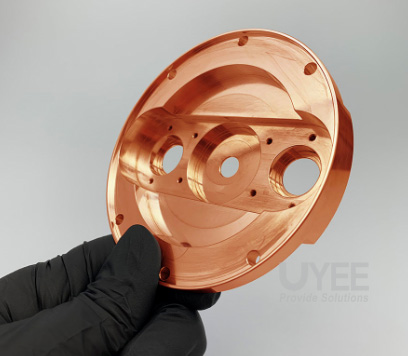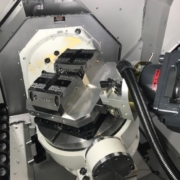The 6 Secrets of Precision CNC Milling
When it comes to producing complicated components, CNC milling is one of the most commonly used processes. Why is it so difficult? When other fabrication processes, such as laser or plasma cutting, can achieve the same results, it is more cost-effective to use them. However, none of these two would compete with CNC milling in terms of functionality. So, we’ll take a deep dive into milling, examining the different elements of the process as well as the equipment. It will help you determine whether you need CNC milling services to manufacture your components or whether there is a more cost-effective option.

What is CNC Milling?
Let us first define CNC milling and clear up some of the more ambiguous aspects of the word itself.
To begin, when looking for milling, people often request CNC machining. CNC milling services and turning are also types of machining, but they are not the same. Machining is a mechanical cutting technology that removes material through physical contact with a variety of tools.
Second, because CNC machines get used in all CNC machining, not all CNC machines are used for machining. Behind these three letters is computer numerical control. CNC machines use computerized systems to automate the cutting process. As a result, CNC machines include laser cutters, plasma cutters, press brakes, etc.
So CNC machining is a combination of these two words, providing an answer to the title’s question. CNC milling is a type of subtractive fabrication that employs computer numerical control systems to automate the process.
What are some of the CNC Milling Secrets?
Milling may get used for various characteristics such as threading, chamfering, slotting, and so on. It enables the production of complex designs with an enviable and precise CNC milling center. CNC machining tolerances are typical +/- 0.1 mm.
These characteristics above necessitate several different milling operations:
- Surface milling
- Face milling
- Angular milling
- Form milling
- Profile milling
- Gear milling, etc.
Plain milling
 Plain milling is sometimes get referred to as surface milling. It employs a horizontal mill, which means that the cutting tool’s rotational axis is parallel to the cutting surface.
Plain milling is sometimes get referred to as surface milling. It employs a horizontal mill, which means that the cutting tool’s rotational axis is parallel to the cutting surface.
Surface milling may employ various cutters, both wide and narrow, depending on the desired outcome. When combined with a slow cutting speed, a quick feed rate, and coarse cutter teeth, using a broad cutter can result in rapid material removal. Of course, the plain finish of such cutting may fall short of the specifications.
As a result, a second step may require changing tools to use more delicate teeth. It necessitates higher cutting speeds and slower feed rates, resulting in a slower amount of material removal per time unit. The result is more accurate at the same time. As a result, the combination of the two is a wise financial decision.
Face milling
This procedure makes use of a cutting tool with teeth on both the sides and the end. The axis of the device is perpendicular to the machined portion.
Face milling is often used after surface milling because it produces more elaborate contours and leaves a good finish. The jaw on the sides do most of the cuts, and the teeth on the tip finish the surface.
Angular milling
This milling operation allows us to make chamfers, grooves, and other features. There are various approaches to implementing these features.
The use of multiple cutters makes the most sense in the case of a standard 3-axis mill. It can use dovetail cutters to make angled grooves, or a mill with a conical cutting head can get used to chamfer. It’s worth noting that these two are opposites.
The cutter’s axis should be perpendicular to or parallel to the surface.
Form milling
To generate more complicated surface contours, this type of milling necessitates the use of specialized tooling. Convex and concave cutters are two examples of tooling used here.
Form milling facilitates the creation of these surface contours in a single cut. The tools can assist in the creation of round recesses, round corners, and so on. The devices must have the corresponding parameters to obtain the desired result.
Gang milling is a subcategory of form milling in which patterns are created by using several cutters simultaneously.
Profile milling
It is a typical milling operation used to produce convex and concave segments. Roughing, semi-completing, and finishing are the three steps of the process.
Roughing is done with round inserts to remove the majority of the material. Ball-nose end mills are ideal for finishing and semi-finishing.
Such work can benefit significantly from CNC milling, as four and five-axis technology will dramatically speed up operations while improving quality.
Gear milling
Yes, milling can also get used to making different kinds of gears. The entire gear manufacturing process gets divided into two steps.
The first step is gear milling. The material’s softness makes it easier to create the part while maintaining tight tolerances. The gears are then subjected to a heat treatment process to harden the surface. Following that, CNC turning will be in charge of the final result.
Conclusion:
Using an ever-expanding set of tools and methods, as well as the consistency and repeatability benefits of CNC automation, machining can finish a workpiece to exact specifications in a single operation, with little or no interference from a machine operator.
Precision CNC milling is often the fabrication method of choice for a wide range of manufactured components due to its ability to work with virtually any material and at any production volume.

